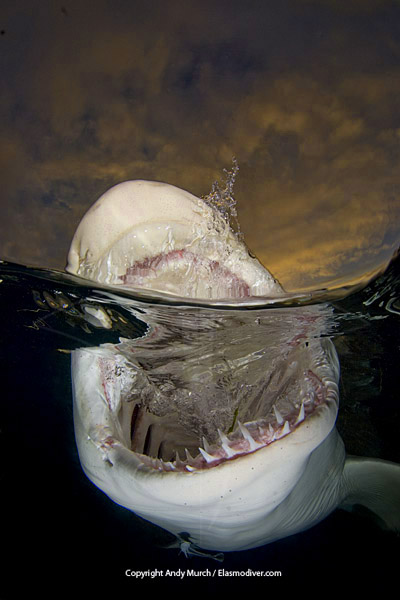Shark Attacks
Identifying the perpetrators
Of the 465 or more species of sharks that are currently described, only a handful are regularly implicated in shark attacks. The most commonly identified (or perhaps misidentified) sharks include the Bull shark, White shark, Tiger shark, and various reef sharks. Historically Sandtiger sharks (AKA Grey nurse sharks in Australia, and Ragged tooth sharks in Southern Africa) were held responsible for many attacks due to their menacing appearance. They have, more recently, been found ‘not guilty’ in the majority of cases but the bad press that they initially received plus their docile nature when in contact with spear fishermen, left them wide open to exploitation and their numbers have been seriously depleted. It is estimated that the schools once common off the East coast of Australia have dwindled to the point of pending extinction with somewhere around 300 individuals remaining.
In most attacks where the shark escapes, it is difficult (if not impossible) to identify the exact species involved. One of the ways that shark attack investigators figure out who is the culprit in an attack is by the examination of teeth that are sometimes left at the scene having been torn from the sharks jaw during the struggle or embedded in the victims flesh or equipment. For example; teeth are sometimes lodged in surf boards during attacks on surfers.
Another good way to identify individual shark species is by measuring the bite radius, the shape of the wound, and the clean or ragged cut of the teeth. For example; a Tiger shark which has an imposing set of cutting teeth capable of sheering through the shells large sea turtles, would leave a cleanly severed bite out of its victim. Whereas, a Sandtiger or Mako Shark which has dagger-like grasping teeth would leave a ragged wound if trying to pull away a portion of flesh.
It is often difficult for victims and observers to report objectively on their experiences due to the traumatic nature of the encounters. This combined with a general public’s lack of knowledge of shark species leaves investigators lacking for accurate information.
Sometimes, geographic location is the best clue to identification. Some species inhabit areas where few other large sharks enter such as the freshwater range of Bull sharks. Attacks occurring far up river are inevitably attributed to this species although in some areas there are other fresh water sharks which may be responsible such as the Ganges shark in the river systems of India.
Bull sharks are indeed one of the most gregarious of shark species and have been implicated in attacks as far reaching as New Jersey to South Africa, and the Zambezi River to Lake Nicaragua.
In attacks off of the surfing beaches of California, White sharks are most commonly implicated. Although other species inhabit this area (such as Blue sharks), the White shark is responsible in the majority of cases as its natural behavior and tendency to frequent surf zones lend to the likelihood of attack.

